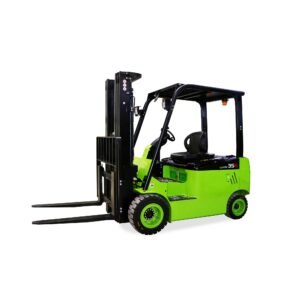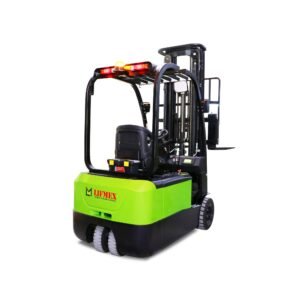What are Forklifts?
Forklifts, often considered the workhorses of warehouses and industrial settings, play a crucial role in material handling and logistics. As a content writer, it’s essential to delve into the intricate details of forklifts, exploring their types, applications, and safety considerations. In this comprehensive guide, we will provide valuable insights into the world of forklifts, empowering businesses and operators with the knowledge needed for efficient and secure operations.
Types of Forklifts
Forklifts come in various types, each designed for specific applications. Understanding the distinctions can help businesses choose the right equipment for their needs.
Counterbalance Forklifts
- These are the most common type of forklifts.
- Suitable for indoor and outdoor applications.
- Available in electric, gas, and diesel models.
Reach Forklifts
- Ideal for narrow aisles and high stacking.
- Extendable mast for reaching loads.
Pallet Jacks (Pump Trucks)
- Perfect for moving palletized loads on a flat surface.
- Manual and electric models available.
Rough Terrain Forklifts
- Designed for outdoor use on uneven surfaces.
- Equipped with large, rugged tires for stability.
Telescopic Handler (Telehandler)
- Combines features of a forklift and a crane.
- Used for lifting and placing loads at height.
Types of Forklift Available
 Electric Counterbalance Forklift
Electric Counterbalance Forklift
GET IT NOW
Efficient and Eco-Friendly Material Handling Solutions. Electric counterbalance forklifts have emerged as key players in the world of material handling, offering businesses a cleaner and more sustainable alternative to traditional fuel-powered counterparts.
Features of Electric Counterbalance Forklifts
Zero Emissions
One of the primary advantages of electric counterbalance forklifts is their environmentally friendly nature. They produce zero emissions during operation, contributing to a greener and more sustainable workspace.
Quiet Operation
Electric forklifts operate more quietly than their internal combustion engine counterparts. This attribute is especially beneficial in noise-sensitive environments.
Low Operating Costs
While the initial cost of electric forklifts may be higher, businesses often find long-term cost savings due to lower maintenance requirements and reduced fuel expenses.
Precision and Control
Electric forklifts provide precise control over acceleration and braking, contributing to enhanced safety and maneuverability in tight spaces.
Regenerative Braking
Many electric forklifts feature regenerative braking systems, which convert braking energy into electric power, improving overall energy efficiency.
Applications of Electric Counterbalance Forklifts
Indoor Warehousing
- Well-suited for indoor applications where emissions and noise are critical considerations.
- Efficiently handles palletized goods in warehouse environments.
Manufacturing Facilities
- Ideal for indoor material transport within manufacturing plants.
- Electric forklifts contribute to a cleaner and safer working environment.
Retail Spaces
- Used for restocking shelves and moving goods within retail settings.
- The quiet operation is advantageous in customer-facing areas.
Energy-Efficient Operations
- Businesses committed to reducing their carbon footprint and energy consumption opt for electric counterbalance forklifts.
 Electric Forklift 3 Wheel
Electric Forklift 3 Wheel
GET IT NOW
Maneuverability Redefined. Electric forklifts with three-wheel configurations bring a new level of agility and maneuverability to material handling operations.
Features of Electric Forklift 3 Wheel
Tight Turning Radius
The design of three-wheel electric forklifts allows for exceptional maneuverability, making them ideal for navigating confined spaces and narrow aisles.
Compact Size
With a more compact footprint compared to traditional forklifts, 3-wheel electric models are suitable for businesses with limited space.
Enhanced Visibility
The design often includes a more open operator compartment, providing better visibility of the load and surroundings.
Improved Stability
Despite their compact size, electric 3-wheel forklifts maintain stability during operation, ensuring the safe handling of loads.
Applications of Electric Forklift 3 Wheel
Retail Environments
- Well-suited for retail spaces with narrow aisles and limited storage space.
- Efficiently handles the movement of goods on the sales floor.
Distribution Centers
- Ideal for navigating crowded distribution centers where space optimization is crucial.
- Efficiently loads and unloads goods in confined areas.
Indoor Manufacturing
- Suited for indoor manufacturing settings where tight spaces require agile material handling solutions.
- Enhances efficiency in assembly line processes.
Multilevel Warehousing
- Three-wheel electric forklifts excel in multilevel warehousing, providing easy navigation between racks and shelves.
Forklift Safety Tips
Ensuring the safety of forklift operators and those working around them is paramount. Here are crucial safety tips for forklift operations:
Operator Training
- Only trained and certified operators should operate forklifts.
- Ongoing training for updated safety protocols.
Load Capacity Awareness
- Never exceed the forklift’s rated load capacity.
- Consult load charts to determine the maximum capacity for specific load dimensions.
Pre-Operational Checks
- Regularly inspect forklifts before operation.
- Check for any leaks, malfunctions, or loose parts.
Proper Loading and Unloading
- Ensure loads are stable and evenly distributed on forks.
- Use the appropriate forklift attachment for the task.
Adherence to Speed Limits
- Follow recommended speed limits, especially in confined spaces.
- Slow down and sound the horn at intersections or blind spots.
Pedestrian Awareness
- Maintain clear visibility of pedestrians and other workers.
- Use horns and lights to signal movement.
Parking and Shutting Down
- Park forklifts in designated areas.
- Lower forks to the ground, engage the parking brake, and turn off the ignition when not in use.
Emergency Procedures
- Familiarize operators with emergency protocols.
- Have fire extinguishers and first aid kits readily available.
Forklift Classifications and Variants
Class I: Electric Motor Rider Trucks
Subtypes:
- Counterbalance Forklifts: Efficient for indoor operations, offering stability and load capacity.
- Three-Wheel Electric Forklifts: Ideal for tight spaces with their agile maneuverability.
Class II: Electric Motor Narrow Aisle Trucks
Subtypes:
- Reach Trucks: Designed for high stacking in narrow aisles, optimizing warehouse space.
- Order Pickers: Facilitates efficient picking of items from shelves.
Class III: Electric Motor Hand Trucks or Hand/Rider Trucks
Examples:
- Electric Pallet Jacks: Streamlining the movement of palletized loads within confined spaces.
- Tow Tractors: Towing materials across a facility, commonly used in logistics.
Class IV: Internal Combustion Engine Trucks (Cushion Tires)
Applications:
- Suited for indoor applications with smooth surfaces, like warehouses and manufacturing plants.
- Propane or diesel-powered for versatility.
Class V: Internal Combustion Engine Trucks (Pneumatic Tires)
Features:
- Well-suited for outdoor applications on rough terrain.
- Increased ground clearance for versatility in construction and lumber yards.
Forklift Maintenance Best Practices
Regular Inspections
- Routine checks of critical components such as brakes, tires, and hydraulics.
- Scheduled maintenance to prevent unexpected breakdowns.
Operator Training Programs
- Comprehensive training for forklift operators on safe and efficient use.
- Regular refresher courses to keep operators updated on the latest safety protocols.
Proactive Repairs
- Addressing minor issues promptly to prevent them from escalating into major problems.
- Keeping a stock of essential spare parts for quick replacements.
Data-Driven Maintenance
- Utilizing telematics data to predict potential issues.
- Implementing predictive maintenance strategies for optimal equipment performance.
Training and certification for operating high-tech forklifts
The introduction of high-tech forklifts has had a profound impact on the material handling industry. These advanced machines have revolutionized the way materials are handled, improving efficiency, safety, and overall productivity in warehouses and distribution centers.
With the ability to navigate narrow aisles and tight spaces, High-tech lifting machines have improved the use of available space, enabling businesses to increase their storage capacity This has led to significant cost savings and increased operational efficiency.
The integration of telematics systems in high-tech forklifts has also transformed maintenance practices. Real-time data on forklift performance and maintenance needs enable proactive maintenance, reducing unplanned downtime and costly repairs. This proactive approach to maintenance ensures that forklifts are always in optimal condition, minimizing disruptions to operations.
Types of Training and Certification
OSHA Forklift Operator Certification
This is the basic certification that all forklift operators must have, regardless of the type of forklift they use. It covers the general principles and practices of forklift safety, operation, and maintenance. It also includes topics such as workplace safety, hazard recognition, and emergency procedures. The certification process typically takes about one day to complete, and it consists of classroom training, hands-on instruction, and a written test. The certification is valid for three years, after which the operator must undergo a refresher course and a re-evaluation
Diesel Technology Certification
This is a certification that is specific to forklifts that run on diesel engines. It covers the technical aspects of diesel engine operation, such as fuel injection, combustion, cooling, lubrication, and exhaust. It also covers the maintenance and repair of diesel engines, such as troubleshooting, diagnostics, and preventive measures. The certification process usually takes several months to complete, and it involves both classroom and laboratory training. The certification is recognized by the National Institute for Automotive Service Excellence (ASE)
Heavy Equipment Mechanics Certification
This is a certification that is specific to forklifts that are classified as heavy equipment, such as telehandlers, rough terrain forklifts, and container handlers. It covers the mechanical aspects of heavy equipment operation, such as hydraulics, pneumatics, electrical systems, and transmissions. It also covers the maintenance and repair of heavy equipment, such as welding, fabrication, and alignment. The certification process usually takes several months to complete, and it involves both classroom and workshop training. The certification is recognized by the Association of Equipment Manufacturers (AEM).
Certified Forklift Technician (CFT) Certification:
This is a certification that is specific to forklifts that are equipped with high-tech features, such as sensors, cameras, GPS, and automation. It covers the advanced aspects of high-tech forklift operation, such as programming, calibration, and troubleshooting. It also covers the maintenance and repair of high-tech forklifts, such as software updates, hardware upgrades, and network connectivity. The certification process usually takes several weeks to complete, and it involves both online and on-site training. The certification is recognized by the Material Handling Equipment Distributors Association (MHEDA)
forklifts are indispensable tools in the realm of material handling and logistics, playing a pivotal role in various industries. Understanding the diverse types of forklifts, their applications, and safety considerations is crucial for businesses aiming for efficient and secure operations.
Electric counterbalance forklifts and three-wheel electric forklifts are highlighted for their environmental friendliness, cost-effectiveness, and maneuverability.
Forklifts are classified into various categories, each serving specific purposes, and maintenance practices are outlined to ensure optimal performance. The integration of telematics in high-tech forklifts is highlighted for its role in predictive maintenance, reducing downtime and enhancing overall efficiency.
For further insights or to discuss your unique requirements, we invite you to connect with us Explore the unparalleled expertise and quality solutions that Shabbir Enterprises brings to the table, ensuring your lifting needs are met with precision and reliability

